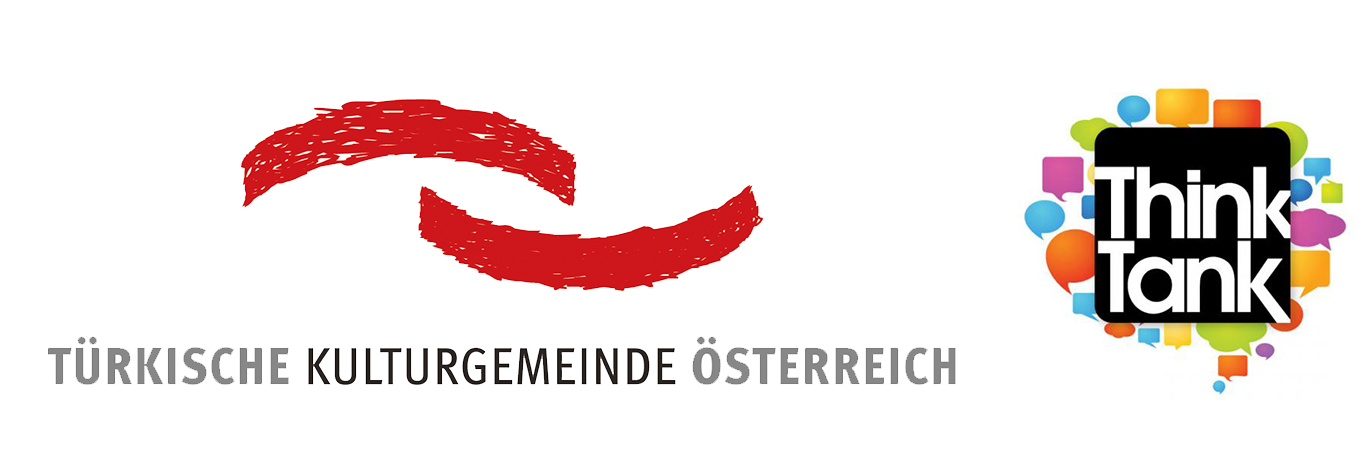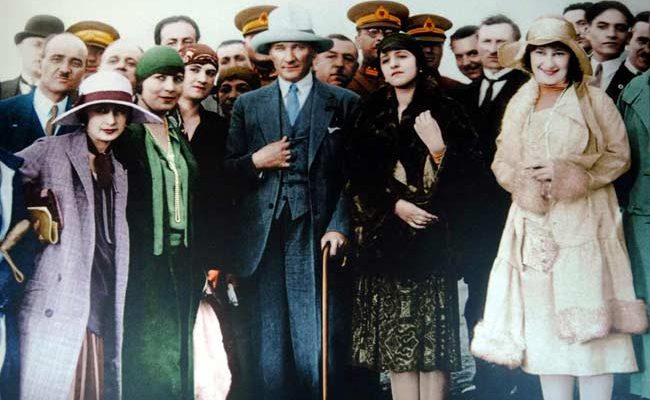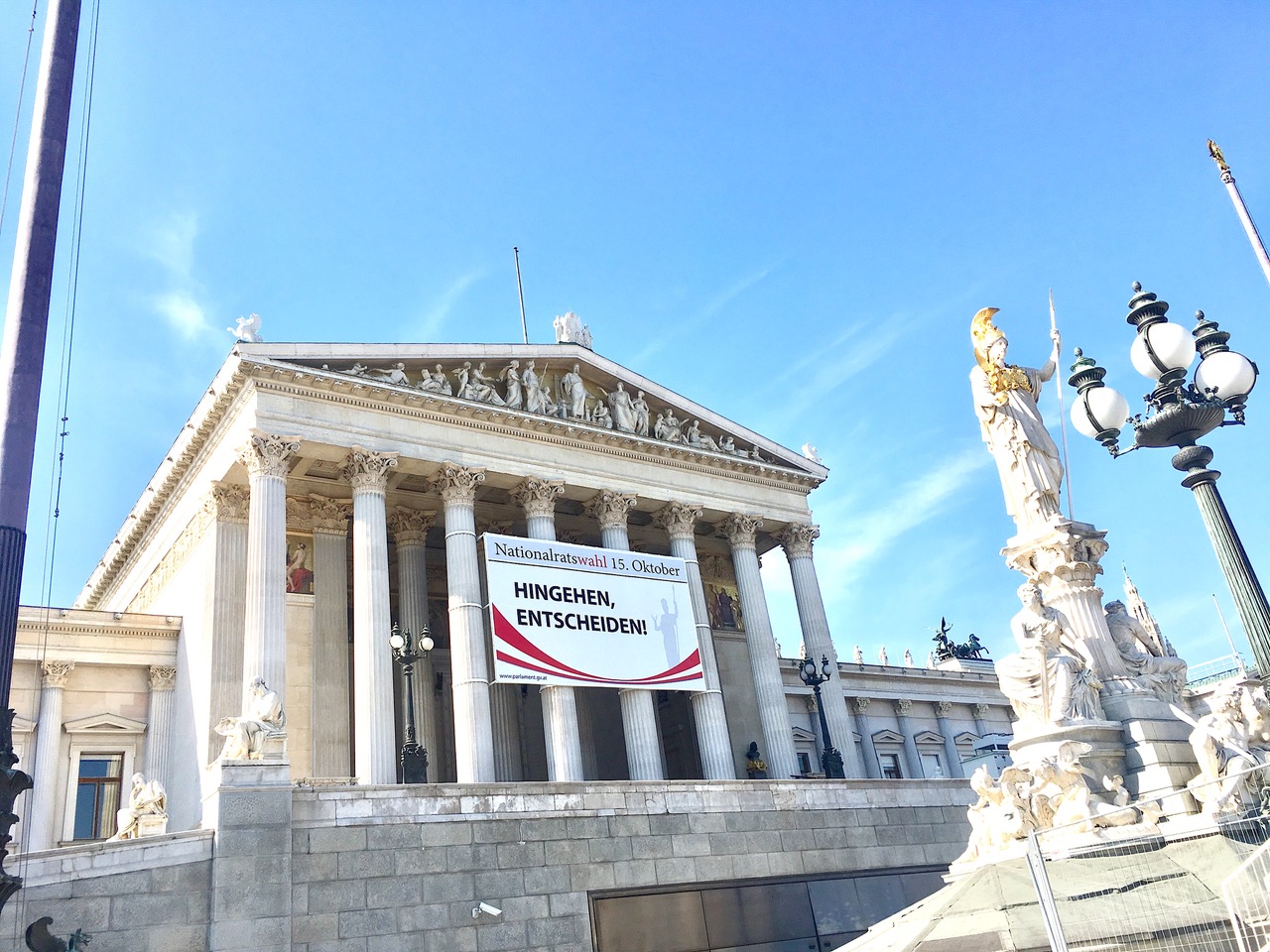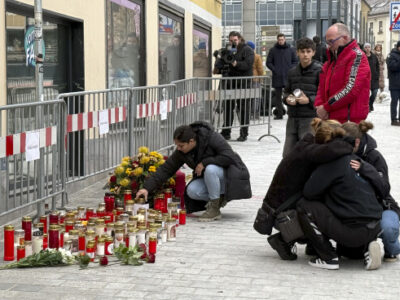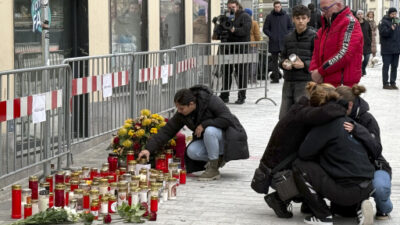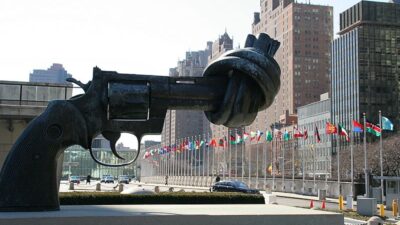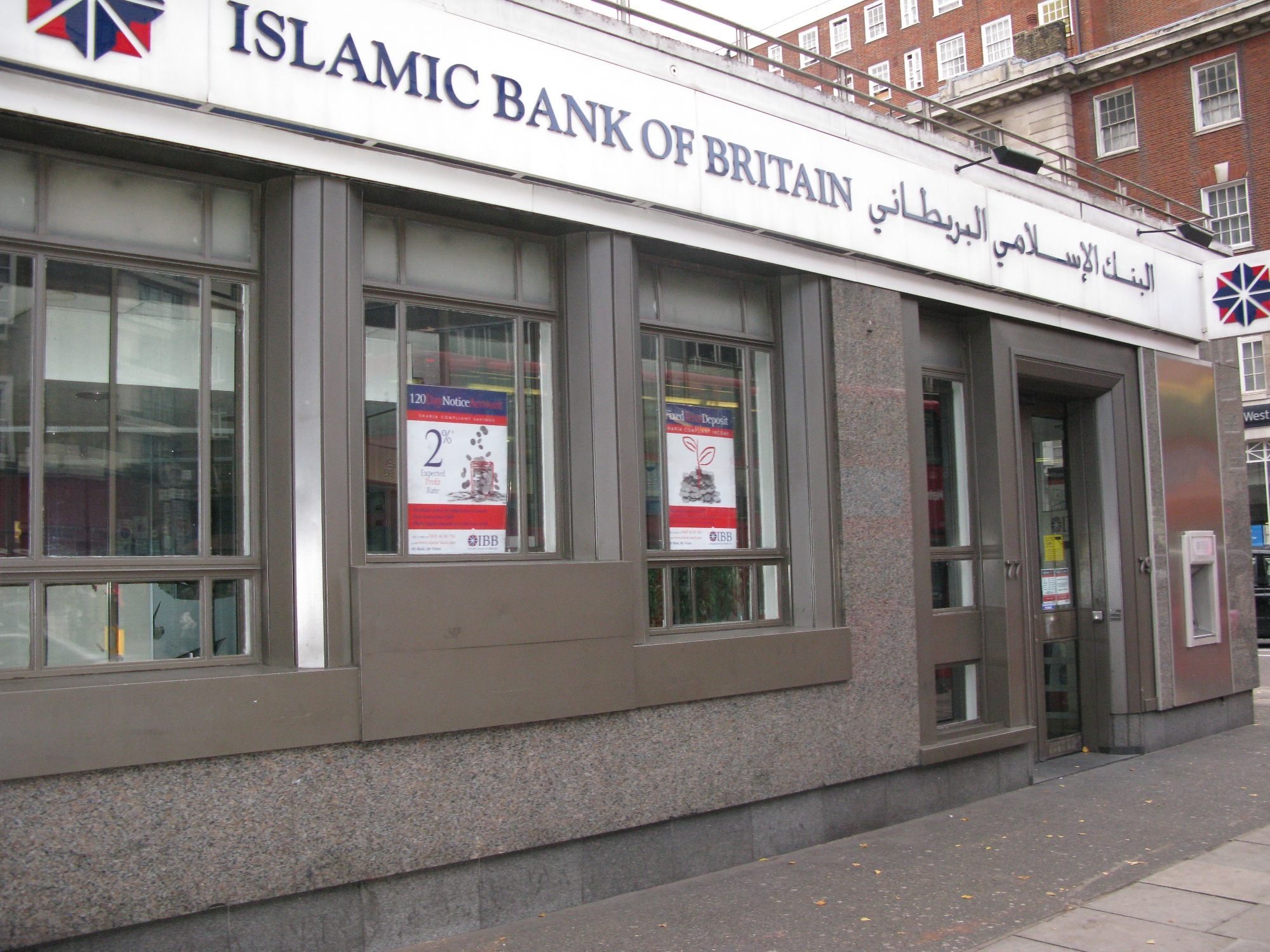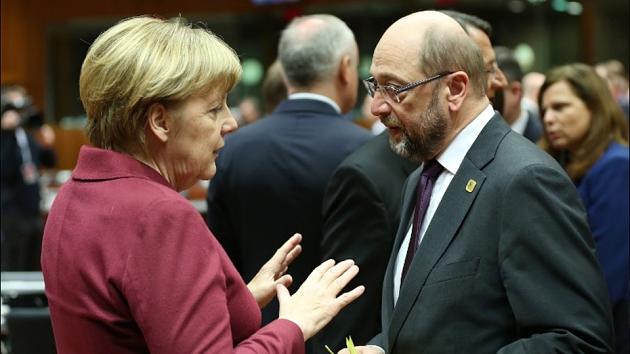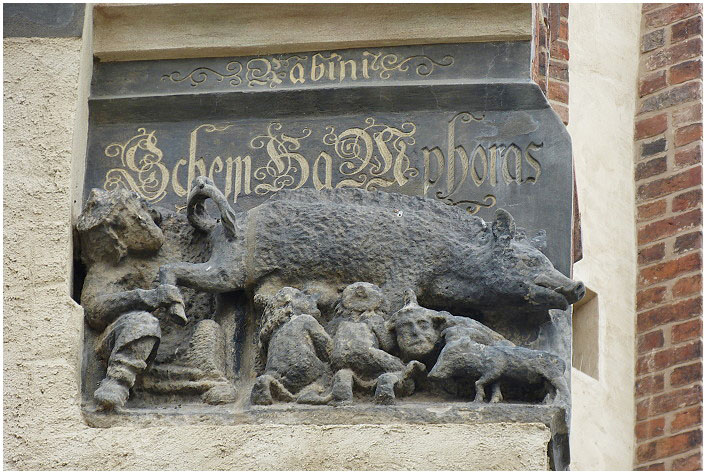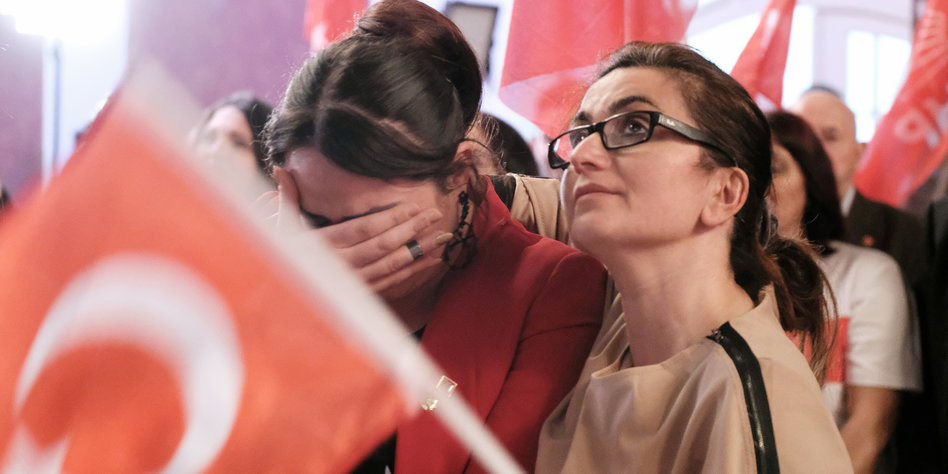Book Review
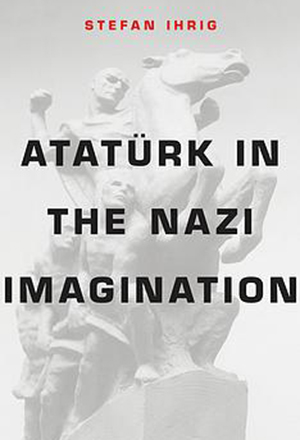
H. Seçkin ÇELİK
Dr., Atatürk Institute, Hacettepe University
ORCID No: 0000-0001-9260-3754
Geliş Tarihi: 23.10.2017 Kabul Tarihi: 24.11.2017
In 2014, the book Atatürk in the Nazi Imagination, which is the doctorate study of Stefan Ihrig, was published by Harvard University Press.2 This book, which sparked a debate due to its topic, was quickly translated into Turkish in 2015.3 The book is of 311 pages and six chapters including the index. The first chapter discusses the lessons which Nazis took from the Turkish War of Independence; the second chapter analyzes how the New Turkey under Mustafa Kemal’s rule is perceived as a preliminary role model for the Nazis, claiming that Hitler was inspired in his coup attempt by Mustafa Kemal rather than Mussolini, contrary to what is generally thought by historians. In the third chapter, the author studies Hitler’s and the Nazis’ admiration of Turkey. In the fourth chapter, praise for Atatürk and the defense of his politics he represents are examined. In the fifth chapter, it is argued that the model of Turkey as a modern “völkisch”4 state and how the foreign policy of Turkey, considered as a “revisionist” country, is taken as a role model again. The sixth and last chapter evaluates Turkey’s foreign policy during the Second World War, which is argued to be pro-Axis neutral like Spain. After summarizing the chapters of the book, we can examine the content of the book. But at first I will evaluate the methodology of the book.
At the beginning of the study; it is mentioned that an elderly woman in Munich in 2007 pointed to the city’s social-democratic mayor, shouting “Hitler was a friend of the Turks and so is Ude” and from this view, it is indicated that the literature on Turkey and Hitler is inadequate to understand their connections. After that, Kemalism is defined as “this ambiguous creature, this cross between authoritarian dictatorship, Bolshevism, Western democracy, and the French revolutionary tradition”; however it is said that only the perceptions of the Nazis about Turkey will be addressed in this study, and the question of whether or not the Nazis are right about their view of Kemalists is not examined.5 The author indicates that he has left that subject to others and referred to a very inadequate “literature”6 on the topic. First of all, this has to be mentioned for such study: Nazis and Hitler, especially after the Second World War and the Holocaust, had rightfully negative connotations in the world and in Europe. After stating that Nazis inspired by a person or an ideology and that the person or the ideology is the source of their actions and their ideology; the methodological preference which indicates only transmitting Nazi’s perceptions in the work does not make the study comprehensible which is the basic function of science. If the perception is distorted, on the contrary, it makes it harder to understand the subject. Therefore, it is not justified for the writer to not consider the effect of such a study on the perception of the investigated person or ideology. Moreover, he did not keep his promise about this topic, he intervened in Nazi perceptions related to Kemalism and Atatürk at his will and he became silent where he did not want to. That is, in case, is a wrong methodological choice for the impression that Nazis distorted the subject where the author intervened and where he did not, Nazis would have made an accurate definition that would leave no room for correction. There are no criteria for the author’s interventions.
One of the probable causes of this topic is that the author has little knowledge about Atatürk and Turkey. Even though such a study is being carried out, the author’s limited understanding of Atatürk and Turkish politics during the interwar period calls into question the quality and the reliability of analyzes included in the study. Although it does not have a direct relation with the Nazi’s “Atatürk image”, a whole chapter devoted to Turkish foreign policy during World War II in the book. In the book, Ihrig; while there is an effort to link the Armenian problem to the Holocaust (as the author has a book about this topic7), it is difficult to explain why the vital examination for such a study, the examination of Atatürk and Turkish politics8 during his period, is highly neglected. For instance, the author is unaware of the study by Orhan Koloğlu who already analyzed how the German press covered Atatürk and his rule.9 Moreover, there is no conceptual framework that the author uses to examine the subject. That hinders the analytical part of the work more.
In this criticism, we will focus on the book’s three main claims. The first claim is that Kemalism and Atatürk -either perceived true of false- have been a source of Nazi ideology and have consequently adopted it as a role model. The second claim is that Armenian Deportation -the author refers to this as Armenian Genocide- is the intellectual source of the Holocaust. The third claim is that Turkey’s foreign policy during the Second World War can be viewed as “pro-Axis” Neutrality.10 Given that the author makes little mention of whether or not the Nazis were justified in making these connections, the reader is left with the perception that almost all political sins of Nazi Germany were inspired from Modern Turkey (post 1908 Turkey). We cannot say that the author does not mention some Nazi distortions, and the author probably knows that this will make the text entirely controversial. Only a few of these distortions have been corrected, no criteria were put forward for these corrections11 and a chapter which is about a period that not directly related to Atatürk’s image was For example, while inadequate information is given about some important points regarding Atatürk and Turkish politics, it is pointed out that Nazis turned a blind eye to some points of Atatürk’s private life: “Furthermore, and also in line with Hitler’s self- portrayal, Atatürk was often described as leading a very frugal life: ‘As a real and true son of his nation, Kemal never led a luxurious but always a simple life.’ Not surprisingly, the “other Atatürk,” the heavy drinker and womanizer, was not present in these texts.” Ibid, p. 158. added to the book. Therefore, it is difficult for readers to get a balanced view on Atatürk and realize that Nazis perceive it in their own way and that they use it in their political/ideological struggle. We will enlarge upon the problems in Ihrig’s analyzes within the framework of three claims we stated in the rest of the article.
Firstly, I will analyze Turkish War of Independence about Turkey being a role-model. In the first part of his book, Ihrig writes that the Turkish War of Independence is an extremely inspiring source for German nationalists, and he indicates that they are more influential than Italian nationalists in this matter. The author astonishedly states that due to the “aversion” to the Versailles Treaty after the war; central, liberal and social democratic publications have developed a common discourse on Turkey with the nationalists. According to the leftist- liberal media press in which author also agreed with , Turkey became “dangerously” important in Germany.12 Turkey was seen as a role model in the 1920s primarily because, unlike Italy, Turkey stood out with its successful rejection of the post-WWI treaty (Sevres Treaty) imposed by the Entente Powers. Similarly, Turkish War of Independence also created excitement in many countries that did not yet gain their independence. The reaction given to the Versailles Treaty was so negative in Germany that ultra-nationalist publications even exemplified Gandhi’s pacifist resistance.13 From Ihrig’s writings, it is understood that German ultranationalist press made a lot of fake news about Turkey. For example, it was stated in a newspaper that Mustafa Kemal had 300,000 men in 1919!14 While the date January 1921 was given for the adoption of the Nation’s Oath (Misak-ı Milli) -the author did not correct that with any additional information15 -, Turkey’s attempt to save the occupied Izmir was called “Turkish Irredentism”. After Turkish victory against the Greek forces in 1922, the ultranationalist German press, erroneously used the image of Mustafa Kemal to defend the charismatic leadership against democracy and presented the Turkish Independence as the birth of warlike politics, which is contrary to Mustafa Kemal’s peaceful policies in the interwar era.16
In short, Turkish War of Independence,17 which created positive reactions in many parts of the world and not just Nazi Germany, was distorted by German ultra-nationalists to serve their own political goals. The second issue within this context is the claim that Kemalist Turkey -either perceived right or wrong- is an ideological source for Nazi Germany. First of all, I would like to mention how Koloğlu, who has made a balanced analysis on this issue, assesses how the pro-Nazi press conveyed Turkey to its readers:
“All of the reasons that have been put forward to glorify Atatürk are the topics that Hitler government set to gain justice for themselves and to show these reasons for their behaviors. This tendency was so powerful in Nazi Press that they claimed that Hitler was sent by a divine power to direct the fate of the nation. They also claimed that Atatürk was also a key man (superior than anyone else) who appeared at the nation’s moment of truth. Moreover, in order to support Hitler’s consolidation of the party and to the theme which is the presidency under one roof, it had been claimed that Atatürk stated that he was in the same style and regarded it as ‘honorable’.”18
Ihrig’s finding of Hitler’s huge interest on Atatürk is rightly a contribution to the literature. However, the attitude of Hitler and the Nazis regarding Atatürk seems to be following an ideological strategy rather than regarding him as an ideological guide. Analytically, this distinction is very important, since Atatürk and his views were systematically distorted by Nazis. Ihrig, as we mentioned above, remains silent from time to time about these distortions. The topics he fails to mention are quite important. Moreover, readers are left in the dark about Atatürk and his ideas. For example, Atatürk held democracy superior to other regimes in the civics textbook that was prepared in line with his directives.19 In the high school Turkish history textbooks which were reflecting his views, it was stated that races did not have a social value.20 In other words, the Kemalist regime was defending the democracy as a mission to be achieved. 21 As Ihrig also acknowledges, Atatürk did not pursue irredentist or imperialist policies. 22 Atatürk contributed to regional peace through various alliance treaties. Despite its attitude against Turkey on Mosul question, leaving this problem behind, Turkey has been a loyal member of League of Nations – Contrary to Hitler’s Germany-. As a diplomatic gesture, Atatürk was even nominated for the Nobel Peace Prize in 1934 by his former foe, the Greek Prime Minister Eleftherios Venizelos.23 Following his death in 1938, League of Nations memorialized him as “a genius international peacemaker”.24 Whereas Turkey’s foreign policy was “peace”, Hitler’s was “war”. While Atatürk defended an education system which would eliminate prejudices among all nations and which would be suitable to his humanitarian ideals25; Hitler’s Germany set up a racist regime and political agenda. While Jewish professors, who were the values of Germany, were dismissed from the German universities under Hitler’s rule, Atatürk’s Turkey invited them to Turkish universities.26 Whereas Hitler supported Franco in the Spanish Civil War, Turkey continued to recognize the Republican government for years.
Within this framework, we need to mention the other problematic points in the book. According to Ihrig, Atatürk came chronologically before Mussolini about being a role model. German extreme right-winger press was propagandizing that Germany needed a “German Kemal Pasha” and an “Ankara Government”. In Hitler’s coup attempt in 1923, foreign sources of inspiration
Sherrill, Üç Adam: Kemal Atatürk, Roosevelt-Mussolini, trs. Cemal Büyükerman, Cumhuriyet Matbaası, İstanbul, 1937. Another example was the work of Count Carlo Sforza -who had known Mustafa Kemal since the Turkish War of Independence. Although he viewed Mustafa Kemal as one of the European dictators, Count Sforza underlined the differences of the Turkish case and wrote that “ The Turks feel, with instinct which rarely fails the Orientals, that Kemal’s is an involuntary dictatorship – a dictatorhisp (I shoul dare to say) aiming at making autocrats and dictators impossible in the self- government of a renovated free nation.” See Count Carlo Sforza, European Dictatorhips, George Allen&Unwin Ltd, London, 1932, pp. 195-208. Yet, Count Sforza wasn’t exempt from critics despite his moderate approach, since Turkish intellectuals as well as Turkish leaders were sensitive to the use of the word “dictatorship” to define the Turkish regime. E.g. see Mahmut Esat Bozkurt, “Yeni Türk Rejimi ve Diktatörlük”, Tan (29 May 1935).
22 In the changes that took place after the Lausanne (Straits Question and Hatay), Turkey preferred diplomatic ways and these changes were non-revisionist revisions that did not come as a part of a revisionist policy.
23 Richard Clogg, A Concise History of Greece, Cambridge University Press, Cambridge, 1997, p. 109. 24 Joan Bird, “Atatürk”, in New Makers of Modern Culture, Vol. 1, Ed. Justin Wintle, Routledge, New York, 2007, p. 59.
25 İlhan Başgöz-Howard E. Wilson, Türkiye Cumhuriyetinde Eğitim ve Atatürk, Dost Yayınları, Ankara, 1968, p. 241.
26 Arnold Reisman, Turkey’s Modernization: Refugees From Nazism and Ataturk’s Vision, New Academia Publishing, Washington, 2006; Emre Dölen, Türkiye Üniversite Tarihi 3: Darülfünun’dan Üniversiteye Geçiş-Tasfiye ve Yeni Kadrolar, İstanbul Bilgi Üniversitesi Yayınları, İstanbul, 2010. were rarely mentioned, but “Mustafa Kemal example” was influential rather than the “Roman March”. Drawing a parallelism between the revolution that Atatürk made for the salvation of the nation, Hitler sometimes thought responding to the ones who called his actions “traitorism” which he made for the salvation of the nation at his trials.27 Due to the lack of information given by the author about the topic, the writings at this part are not enlightening enough. In Germany, extreme right-wing organizations were organized for the purpose of the coup in the immediate aftermath of the First World War. For example, in 1920-1921, Bavaria became a shelter for nearly 15 “right-wing juntas” due to Bavarian Prime Minister Gustav von Kahr’s tolerant policies. In March 1920, the failed coup attempt led by Wolfgang Kapp is also well-known.28 Thus, Hitler did not need a foreign source of inspiration for his actions. Hitler’s interpretation and reflection of Atatürk’s success and prestige was a significant distortion and reflected an effort to establish a parallelism with an example that can be regarded well by public. Despite the claims of Atatürk’s influence on Hitler, the author is surprised that there was no mention of Atatürk in Hitler’s book, Mein Kampf. In the book, Mein Kampf; Mussolini who was regarded as one of “the world’s great men”29 was mentioned briefly, and according to the author that is enough to show that this situation has a little importance.
Another point is that the author has never mentioned the problem in the information given by German press which defined Turkey as a dictatorship from almost the beginning of the National Struggle. As the 1921 and 1924 Constitutions did not contain a dictatorship and during the Independence war, exceptional powers were temporarily given to Chief Commander Mustafa Kemal by the Assembly. During the War of Independence, there was no single party rule in Ankara. It is well understood that the author does not talk much about these information because he has this weird comment about Turkey and Atatürk: “It’s no surprise that the Nazis made full use of Atatürk’s story. After all, as one author stressed, with the New Turkey Atatürk had become ‘the pioneer and the one who paved the way forth he kind of authoritarian regime that came to be more and more commonplace in Europe’.”30 It is quite hard to understand this comment. Until October 1923, when the government regime of Turkey was not determined and one single party government was not set, Mussolini had already came to power and General Primo de Rivera had already staged his coup in 1923. More important than these, Atatürk’s enlightened authoritarian administration has considerable differences than these governments and their goals.31 In 1923, there was a political revolution which the Republic were established in Turkey, not a coup. Atatürk was elected as President by the vote of the deputies. The problem of being an example to Europe poses a quite different problem; because in 1929 Turkey was still trying to be accepted as a part of Europe and was rejecting letters written “Asia Minor” on it, as stated by Turkish Minister of Education, Mr. Taray.32 The relatively acceptable view of the author regarding Atatürk as a role model is that; the praises to Atatürk did not threaten Hitler cult33, because Turkey was not among Hitler’s Germany’s possible competitors in European and world politics. In fact, this is in contradiction with the great importance attributed by Ihrig to “Turkey as a role model”.
Secondly; we will refer to the views of Ihrig about the Armenian issue and to the minority policies in Turkey that Nazis assumed to be effective in the image of Atatürk and Turkey. In fact, the attitude of the author on the “Armenian Genocide” is a micro example of the whole book’s approach. First, the author states as if he acknowledges the “Armenian Genocide” by saying “by the beginning of the Third Reich the ‘minority question’ in Turkey had been mainly ‘resolved.’ Most of the Armenians of Anatolia had either perished in Armenian Genocide or subsequently left the country.”34 However, only one page later he also states that “there is no point debating here whether an Armenian Genocide actually took place”.35 Then, the author continues to call it Armenian Genocide without using any quotation marks. According to the author, modern anti-Semitism in the 19th century and German anti-Armenianism shared the same roots. The Armenians were seen as “the Jews of the Orient”. Secondly, the author states that the Nazis grew up with the Armenian Genocide as well as the Turkish War of Independence. Within this context, it is stated that the Nazis were inspired by
31 As Stephen Lee put it: “Others have found similarities with Mussolini’s Italy, especially in the role of nationalism, of the legitimacy of a one-party system, of the personality cult and of a populist type of corporativism. There were, however, more differences than similarities between Kemalism and Fascism. The latter was a popular movement, orchestrated by Mussolini; Kemal, by contrast, introduced his changes on a largely indifferent population. Nor did Kemal have any expansionist programme; if anything his whole rationale was an acceptance of the collapse of a past empire rather than on an attempt to create a future one. With that in mind, together with Kemal’s affinity with western ideas, it would clearly be wrong to consider Turkey to be in any way fascist. The Armenian Genocide, and that one of the lessons that Nazis got from the Kemalist victories was the “ethnic cleansing” of the country.36 First of all, according to the scholarship, there is no evidence that Atatürk had any role in Armenian Deportation. Although Ihrig does not seem to agree with the validity of the “modern völkisch state” qualification that the Nazis use for New Turkey, he suggests substituting it with Europeanization.37 At this point, there was no information about the important differences in Atatürk’s understanding of nationalism. Acceptance of Jewish scholars who were forced to leave Germany briefly mentioned elsewhere, but there is no mention of selection of the four Armenian, Greek, Jewish origin deputies in the 1935 General Elections.38 Moreover, there is no mention of adoption of civil law and of the equal rights given regardless of the religion. The author says that the Nazis grew up with “Armenian Genocide”; however, the information about Hitler shows that he was an anti-Semitist and racist before Armenian incidents. He expressed this in his book, Mein Kampf. As writer was, in fact, aware that Hitler’s racist feelings developed against Vienna’s cosmopolitanism.39 So, under the influence of racist feelings in Europe, Hitler was already “grown up” with reaction to Vienna cosmopolitanism.40 It should also be noted that in the texts reflecting Nazi view, it was tried to draw a parallelism between Atatürk’s reaction to the cosmopolitanism of Istanbul and Hitler’s reaction to the cosmopolitanism of Vienna but the author did not need to correct this. However, Atatürk did not, the Nazis “grew up” with Namibia Genocide: “When Göring was asked to speak briefly about his life before 1914 he outlined, what he called ‘a few points which are significant with relation to my later development. He told the court [in Nuremberg] of this father who had been the ‘first Governor of South-West Africa’, pointing out that in that capacity the elder Göring had had ‘connections at that time with two British statesmen, Cecil Rhodes and the elder Chamberlain. (…) Eighteen years after the Herero-Nama Genocide, Hitler bacame closely associated with a veteran of the conflict. In 1922 he was recruited into an ultra-right-wing militia in Munich that was indirectly under the command of the charismatic General Franz Von Epp, who had been a lieutenant during Germany’s wars against the Herero and Nama.” Olusoga and Erichsen also suggest to examine Nazi ideology and practices as a part of a “longer trend” within European history :“(…) the comforting fantasy that the Nazis were a new order of monsters and that their crimes were without precursor or precedent. They were not. Much of Nazi ideology and many of the crimes committed in its name were part of a longer trend within European history. Nazism was both a culmination and a distortion of decades of German and European history and philosophy. It was, in part, the final homecoming of theories and practices that Europeans had developed and perfected in far-flung corners of the world during the last phase of imperial conquest.” See David Olusoga- Casper W
develop Hitler-like views under the influence of cosmopolitanism in Istanbul, and that is undoubtedly a matter that has much more importance than corrections about Atatürk’s personal life.
Finally, we will mention the author’s claims about Turkey’s foreign policy during Second World War. According to the author, Turkey was close to Nazi Germany, even if not as much as Italy was to Germany. The ideological similarity that Germans saw in Turkey was not still fully reflected in their foreign policies. After a little hesitation at the beginning of the war, Turkey was supposed to join the war against Germany as a consequence of the treaty of alliance she signed with Britain and France. However, Turkey became closer to Germany, she wanted to Germany to win the war, so she used her control over Straits in favor of Germany. Turanist organizations41 repressed during Atatürk period were re-emerged again. Apparently, everyone in the state, except Ismet Inonü, was pro-German. Although Ihrig says “unfortunately this is not the place to deal with this topic extensively”; he follows a revisionist course with limited resources. Since Turkey is a pro-status quo country and thus perceived the revisionist powers, Germany and Italy, as a threat, Turkey developed its relations with Britain from the second half of the 1930s. The rapprochement initiated by Atatürk culminated with an alliance treaty signed with Britain and France in 1939. Contrary to what the author assumes, this treaty did not require Turkey to enter the war automatically when the war reached the Mediterranean. Turkey put forward three strong conditions in this regard. The treaty of Alliance was made with three countries; but France was out of war with a ceasefire. Secondly, according to the sixth article of the “Accord Special” signed with France and England, Turkey could enter the war only after the war equipment promised by France and England came. However, there was not enough equipment aid.42 Thirdly, Turkey made a reservation to the treaty. According to “the Protocol No.2”, the obligations undertaken by Turkey could not have caused this country to be dragged into armed conflict with the Soviets. However, Germany and the Soviet Union signed a pact of non-aggression and shared out Poland. If Turkey entered the war, she would have faced the same end with Poland. But these following facts put an end the possibility of reconciliation; the signing of German- Soviet Non-Aggression Treaty in August 1939, the request for the common defense of the Straits for the treaty that Turkey wanted to sign with the Soviet Union and the Soviets requested to make a reservation to the treaty in order to refrain from a possible armed conflict with Germany.43 The fact that the Soviet Union demanded the Straits from Germans in the wake of the war deepened the skepticism of Turkey against the Soviets. Within this context, Turkey’s aim was to be able to stay out of the war in every possible way. Thus, an expert on this topic, Selim Deringil uses the following expressions in his important study of Turkish foreign policy in the Second World War:
“Turkish foreign policy during the period under review remains one of the major diplomatic feats of diplomatic tightrope walking in the annals of recent international relations. (…) The country seen on the map of 1941 forms, ‘a great oblong pad of poorly developed territory’, jutting out into Nazi-dominated Europe, entirely surrounded by Axis or pro-Axis forces. Encircled and enticed as she was, Turkey was able to achieve her primary aim of staying out of the universe of devastation which surrounded her.”44
In this this part, the author talks about neither the Nazi-Soviet treaty, nor the Soviet’s division of Poland with Germany, nor Soviet’s attack on Finland and nor making nearly impossible for Turkey to form an alliance with the Soviet Union with unacceptable demands. Moreover, Turkey was constantly declaring her alliance with England. Ulus newspaper, the semi-official publication of CHP (Republican People’s Party) criticized imperialist policies of Hitler and Mussolini and sided with the occupied countries.45 The signing of the non-aggression treaty with Germany was closely related to the protection from the German army, which was at the border of Turkey. And İnönü criticized allusively the policy of Hitler in the letters between him and Hitler as that; in case of attacking Turkey, İnönü made the determination of the country clear to Hitler.46 Shortly before the signing of the treaty, Ribbentrop wrote to Papen that he understood the main purpose of Turkey and stated: “Turkey would indeed like to conclude a treaty with Germany in order to guarantee herself aganist German attack, but would a the same time like to remain allied to England and apparently to preserve the possibility of cooperating with her politically and militarily in case of neccessity, at least indirectly.”47 While there was more than 2.5 years before the war was over, the Ulus newspaper editorial mentioned in his column about the new world order, would appear in the frame predicted by the Atlantic Pact.48 But one of the main concerns of Turkey was that Europe would be sovietized after the war and that Turkey would be put under pressure about the Straits. The European concern of Sovietization was also shared by W. Churchill. For this reason, even though Churchill was unable to persuade İnönü to enter the war, Britain continued to make weapon aids to Turkey.49 Moreover, at the Tehran Conference,50 Roosevelt said that “if he were in Turkish President’s place he would demand such a price in planes, tanks and equipment that to grant the request would indefinitely postpone Overlord.”51
There were those in Turkey who were more sympathetic to Germans against Soviets, either for the thought of “my enemy’s enemy” or for ideological reasons. As the author stated, there was a revival between 1941 and 1944 in the Turanist publications; however, the views expressed in these publications were constantly criticized by Ulus newspaper’s editorial and did not reflect the official view. Furthermore, Hasan Âli Yücel, known for his humanist views, became Minister of Education (1939-1946) and implemented a curriculum in which humanist texts were taught. These politics were criticized
46 See Zeki Kuneralp, İkinci Dünya Harbinde Türk Dış Siyaset: Dışişleri Bakanlığı’nın Onbir Telgrafı, İstanbul Matbaası, İstanbul, 1998, pp. 51-64.
47 See Ministry of Foreign Affaris of The USSR Archives Division: German Foreign Office Documents: German Policy in Turkey, 1941-1943, Foreign Languages Publishing House, Moscow, 1948, pp. 25- 26. In his telegram to German Foreign Office in 1942, Papen expressed his views on “the Turkish opinion” about the “Anglo-American bloc”: “In the Turkish opinion, of the partners of Anglo-American bloc, America ise invincible. Consequently, the Axis Powers could secure a decision in their favour only by smashing the British world empire.
About the Straits, though the Allies had critics from time to time, these criticisms did not claim that Turkey was following a pro-German policy. It is well known that Turkey had so much pressure from all sides that were at war, because of the strategic importance of the Straits. Whereas the Soviets were worried that the German warships would pass through the Straits, and that the Germans were worried that Allies would send aid to the Soviets through the Straits. It can be said that Turkey, which had not a strong navy at the time, faced very difficult situations against these pressures.53 For the Allies, the problem was related to Turkey’s restrictive interpretation of tonnage of ships going through the Straits. In the note Turkey gave to Soviet, it was stated that a few problems arouse, because Germany tried to pass some articles of the treaty which were about the tonnages and types of vessels with trick and once this was understood, precautions were taken.54 There are many more examples of this subject; but I hope I have shown that Ihrig has very inaccurate information and very wrong results with giving selective information.
Ihrig points out the problems related to Nazis’ perceptions about Atatürk and Turkey at the conclusion part. For example, he writes in a part as this: “This vision was highly selective and accentuated only what the authors and the Third Reich want to see; it was also extremely settled and rigid, and by 1933 it had turned to stone. Neither Turkish “reality” since 1919 nor any developments in contemporary Turkey were to change this petrified simulacrum of Turkey.”55 According to the author, the policy of Turkey during the Second World War played a role on the continuing of this image. As the foreign policy of Turkey during Second World War has been adequately explained, I want to concentrate on the other points in the conclusion.
First of all, the Nazi image related to Turkey and Atatürk is selective and based on distortions from beginning to end, so it would not be correct to argue that one-time judgments remain same despite changing Turkey. Secondly, from the beginning of the book, the author gave very limited information about the political regime established in Turkey, the objectives of Turkey, the vision of Atatürk, and he has a vague approach about whether the perceptions of the Nazis were real or not. In short, the author did not exactly show distortions nor refrain from giving his own knowledge and interpretations of Kemalism. The author objected to the ones claiming Kemalism is not fascism; but it is “an educational dictatorship”.56 However, he stated in his study that he would not examine whether Kemalism was fascism or not, and here he states his own comments about the relationship between Kemalism and fascism. This contradictory attitude of him is a good example of that neither he avoids of using his own comments and knowledge about Kemalism nor he exactly shows the distortions. As a result, it is a fact that Nazis distorted Atatürk and Kemalism in terms of their own interest, but the author presents this information as well as including the Armenian Question/ “the Armenian Genocide” and the claims that are Turkey’s foreign policy being pro-German. While doing this, he both relies on the insufficient literature review on the true nature of Kemalism and he has an ambiguous attitude according to the distortions of Nazis about Atatürk and Kemalism. And this is a preference that makes it more difficult for readers to understand the subject properly. At this point, the study is not persuasive in terms of the necessary objectivity in scientific work as it also carries serious methodological and analytical problems.
References
Cumhuriyet Tarihi Araştırmaları Dergisi – Journal of Modern Turkish Studies 13/26 (Fall 2017), ss.253-268.
A.AFETİNAN (1998) Medenî Bilgiler ve M. Kemal Atatürk’ün El Yazıları, Türk Tarih Kurumu Yayınları, Ankara.
ATAY Falih Rıfkı (1943) Geçen Yılın Münakaşaları Arasında, Ulus (2 January 1943).
AYDIN Mustafa (2009) İkinci Dünya Savaşı ve Türkiye 1939-1945, in Türk Dış Politikası: Kurtuluş Savaşından Bugüne Olgular, Belgeler, Yorumlar Cilt 1- (1919- 1980), Ed. Baskın Oran, İletişim Yayınları, İstanbul.
BEROJKOV Valentin (2012) Yeni Bir Dünyaya Doğru: Tahran 1943, trs. Hasan Âli Ediz, Türkiye İş Bankası Kültür Yayınları, İstanbul.
BIRD Joan (2007) Atatürk, in New Makers of Modern Culture, Vol. 1, Ed. Justin Wintle, Routledge, New York.
BİLSEL Cemil (1948) Türk Boğazları, İsmail Akgün Matbaası, İstanbul.
Biz Asyai Bir Hükümet Değiliz, Cumhuriyet (18 August 1929).
BOZKURT Mahmut Esat (1935), Yeni Türk Rejimi ve Diktatörlük, Tan (29 May).
56 Ibid, p. 169.
H. Seçkin ÇELİK, An Image Study on Atatürk’s… 267 BÜYÜKTUĞRUL Afif (2005) Cumhuriyet Donanmasının Kuruluşu Sırasında
60 Yıl Hizmet (1918-1977), Vol. 2, Deniz Basımevi, İstanbul.
CLOGG Richard (1997) A Concise History of Greece, Cambridge University Press, Cambridge.
ÇELİK Haydar Seçkin (2016) İnönü Döneminde Kemalizm: Değişim ve Süreklilik (1938-1950) (2016) Hacettepe University Atatürk Institute, Phd Thesis, Ankara.
DERİNGIL Selim (2004) Turkish Foreign Policy During the Second World War: An ‘Active’ Neutrality, Cambridge University Press, Cambridge.
DÖLEN Emre (2010) Türkiye Üniversite Tarihi 3: Darülfünun’dan Üniversiteye Geçiş- Tasfiye ve Yeni Kadrolar, İstanbul Bilgi Üniversitesi Yayınları, İstanbul.
FRUS (1961) The Conferences at Cairo and Tehran, 1943, United States Government Printing Office, Washington.
GÜNEŞ İhsan (2017) Atatürk Dönemi Türkiye’sinde Milletvekili Genel Seçimleri 1919-1935, Türkiye İş Bankası Kültür Yayınları, İstanbul.
HASANLİ Jamil (2011) Stalin and The Turkish Crisis of the Cold War 1945-1953, Lexington Books, Lanham.
HITLER Adolf (1939) Mein Kampf, Hurst and Blackett, London.
IHRIG Stefan (2014) Atatürk in the Nazi Imagination, Harvard University Press,
Cambridge.
—————- (2015) Naziler ve Atatürk, trs. Ahmet Fethi Yıldırım, Alfa Basım Yayın, İstanbul.
—————- (2016) Justifying Genocide: Germany and the Armenians from Bismarck to Hitler, Harvard University Press, Cambridge.
KOLOĞLU Orhan (2004) Mazlum Milletler Devrimleri ve Türk Devrimi, Kaynak Yayınları, İstanbul.
KUNERALP Zeki (1998) İkinci Dünya Harbinde Türk Dış Siyaset: Dışişleri Bakanlığı’nın Onbir Telgrafı, İstanbul Matbaası, İstanbul.
LEE Stephen J. (2016) European Dictatorships 1918-1945, Routledge, London&New York.
Ministry of Foreign Affaris of the USSR Archives Division: German Foreign Office Documents: German Policy in Turkey, 1941-1943 (1948) Foreign Languages Publishing House, Moscow.
268 Cumhuriyet Tarihi Araştırmaları Dergisi Yıl 13 Sayı 26 (Güz 2017)
OLUSOGA David, ERICHSEN Casper W. (2010) The Kaiser’s Holocaust: Germany’s Forgotten Genocide and the Colonial Roots of Nazism, Faber&Faber, London.
ORAN Baskın (2009) Dönemin Bilançosu [Savaş Kaosunda Türkiye: Görelik Özerklik-2 1939-1945], in Türk Dış Politikası: Kurtuluş Savaşından Bugüne Olgular, Belgeler, Yorumlar Cilt 1- (1919-1980), Ed. Baskın Oran, İletişim Yayınları, İstanbul.
REISMAN Arnold (2006) Turkey’s Modernization: Refugees From Nazism and Ataturk’s Vision, New Academia Publishing, Washington.
SACHAR Howard M. (2015) The Assassination of Europe 1918-1942, University of Toronto Press, Ontario.
SFORZA Count Carlo (1932) European Dictatorhips, George Allen&Unwin Ltd, London.
SHERRILL G. (1937) Üç Adam: Kemal Atatürk, Roosevelt-Mussolini, trs. Cemal Büyükerman, Cumhuriyet Matbaası, İstanbul.
SINHA R.K. (1972) Kurtuluş Savaşı, Devrimler, Mustafa Kemal ve Mahatma Gandi (1919-1928), Milliyet Yayınları, İstanbul.
